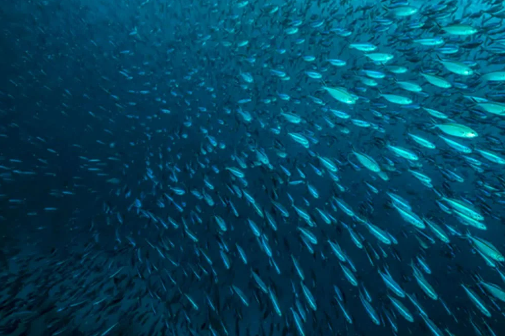Largest Feeding Frenzy Ever Recorded
The Barents Sea has become the site of an extraordinary oceanic event. Scientists have documented the largest feeding frenzy in deep waters. This phenomenon has important implications for marine ecosystems. It also raises questions about the impacts of climate change on ocean life.
Revolutionary Technology in Marine Research
Researchers from MIT and the Norwegian Institute of Marine Research have transformed oceanography. They introduced the Ocean Acoustic Waveguide Remote Sensing (OAWRS) system. This technology uses sound waves to map fish populations. It emits acoustic waves from a boat and captures echoes. This allows for real-time mapping of fish movements across vast areas.
Multispectral Techniques for Species Identification
The MIT team employed a multispectral technique for enhanced observations. This method analyses sound frequencies specific to different fish species. By examining the unique characteristics of swim bladders, researchers can differentiate between capelin and cod. This advancement allows for more precise studies of marine life.
The Epic Feeding Frenzy
The feeding frenzy began with capelin, a critical Arctic fish species. Initially, small groups of capelin searched for spawning grounds. As they gathered, they formed a massive school of around twenty-three million fish. This aggregation stretched approximately ten kilometres. Unfortunately, it attracted the attention of predatory Atlantic cod. An estimated 2.5 million cod arrived to feast on the capelin. More than half of the capelin population was consumed.
Implications of Climate Change
This unprecedented event marks the fragility of marine ecosystems. Capelin serve as a vital food source for various species, including cod and seals. A decline in capelin populations could disrupt the food web. Climate change exacerbates challenges for these fish. Melting sea ice forces capelin to migrate further. This increases their vulnerability to predators. Additionally, changing ocean temperatures affect fish behaviour and distribution.
Future of Marine Conservation
The frequency of large-scale predation events poses risks to marine stability. Researchers stress the importance of monitoring these phenomena. By identifying predation hotspots, scientists can provide insights for conservation efforts. This knowledge may help prevent the collapse of fish populations. The OAWRS technology will be applied to other species in future studies. These efforts aim to maintain the delicate balance of marine ecosystems.
Important Facts for Exams:
- OAWRS – The Ocean Acoustic Waveguide Remote Sensing system uses sound waves to map fish populations. It allows real-time tracking across extensive underwater areas. This technology revolutionises marine research.
- Capelin – Capelin are vital Arctic fish that serve as a primary food source for various species. Their populations are crucial for maintaining marine ecosystems. Declines could disrupt the entire food web.
- Barents Sea – The Barents Sea is located off the northern coast of Norway. It has become an important site for marine research. Recent events highlight its ecological importance and vulnerability.
Month: Current Affairs - November, 2024
Category: Environment Current Affairs


